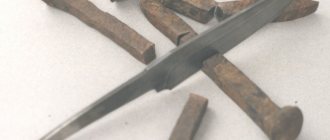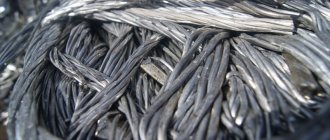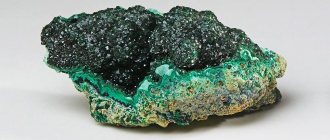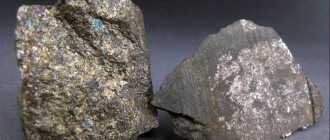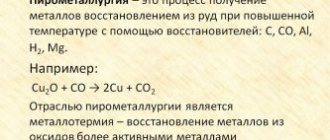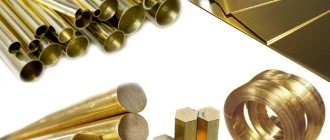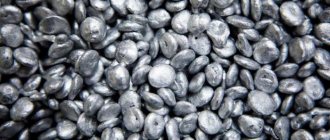History of production and use of aluminum
In the mid-19th century in Western Europe, scientists desperately tried to obtain aluminum in its pure form. In 1825, Danish explorer H.C. Oersted was the first to carry out a similar experiment using potassium in the form of an amalgam. Unfortunately, it was not possible to accurately determine the resulting substance.
However, two years later, the German scientist Wöhler became interested in obtaining aluminum. He used pure potassium to restore the metal. After 20 years of persistent searching, he managed to obtain pure aluminum in the form of granules the size of a match head. Aluminum turned out to be a beautiful and light metal, similar to silver. These properties of aluminum determined its high cost at that period of history: it was valued more expensive than gold.
At the 1855 Paris Exhibition, aluminum was the main attraction. Aluminum jewelry was placed next to the French crown diamonds. Aluminum has become a very fashionable metal. It was considered a noble element created by nature to create masterpieces of art.
Since the physical and chemical properties of aluminum were poorly studied, jewelers independently invented ways to process it. The softness and pliability of the metal allowed them to create products of any shape, make imprints of intricate patterns, and apply a variety of designs. Aluminum was coated with gold, polished, matted.
However, over time, aluminum began to go out of fashion. In the mid-1860s, a kilogram of this metal already cost only about one hundred old francs, compared to 3 thousand in 1854-1856.
Currently, the first aluminum products are of great value. Unfortunately, fashion fans have replaced most of them with gold, silver and other precious alloys and metals.
However, scientists were not stopped by changing fashion. In 1886, chemist Charles Martin Hall developed a cheap method for producing aluminum in large quantities. He added and dissolved a small amount of aluminum oxide in molten cryolite (a compound of aluminum with sodium and fluorine). Then, placing the mixture in a granite vessel, he passed an electric current through it. After several hours of waiting, he saw shiny “buttons” of pure aluminum at the bottom of the vessel. The Austrian engineer Karl Joseph Bayer, who was working in Russia at that time, did not stand aside and proposed a technology for producing alumina, which helped make the new method even cheaper. As a result, Bayer and Hall's version of aluminum production is still used in modern manufacturing today.
Report from the leadership of TsAGI to the Central Committee of the All-Union Communist Party of Bolsheviks on the experimental production of duralumin
October 8, 1931
Until recently, the main aircraft building material, duralumin, could not fully meet the requirements of aviation. Its resistance to the action of the atmosphere and moisture was generally insignificant. The material quickly deteriorated in use (was affected by corrosion). To protect the metal from this corrosion, varnishes, paints, fats and other means were used, which, however, did not give the desired results and led to a large increase in the cost of production.
In 1926‑1927 In America, the Alkled alloy appeared, which has great resistance to corrosion. Production methods and principles for preparing such an alloy are kept secret by capitalist countries.
In 1929, the metallurgical shops of plant No. 1 produced the first sheets of duralumin, which were also not subject to corrosion . At the beginning of 1930, a method for producing these sheets was established, which consisted of coating (cladding) duralumin blanks with a thin layer of aluminum, which were welded together during a hot rolling process. The resulting material, when tested in our laboratories and when tested at our request by TsAGI under conditions of exposure to sea water of the Black Sea, gave excellent resistance to corrosion, but due to the presence of an aluminum layer, it had reduced mechanical properties.
In 1930, Plant No. 1 carried out work to find an alloy that, when clad, would give the mechanical properties of normal duralumin.
In the summer of 1930, the plant managed to produce clad sheets that were not only of the same quality as duralumin, but also exceeded them by 15%. In August 1930, the technical report of the chief metallurgist indicating the composition of the alloy and methods of its production was sent to all interested institutions, TsAGI, VAO, plant 45, etc.
In November 1930, 2 aircraft were built from clad material from Plant 1 at Plant No. 22 to test for corrosion resistance. The planes were not coated with any paint and showed no signs of corrosion during 10 months of operation. The factory scale of production of this alloy showed its advantages not only in operation, but also in the production process. Simplification of the production process alone should result in savings of 2.5 million rubles already in 1932.
As for the savings that the country will receive from operating aircraft made of new material, on extending the service life of aircraft, reducing repair work, reducing painting costs, lightening the structure, and other things, it is so great that calculating it is an extremely difficult task.
In 1931, based on the experimental research work carried out by plant No. 1, the production of ordinary duralumin began to be transferred to clad aluminum at plant No. 1 of the VAO and Kolchuginsky. Since that time, OIAM TsAGI, which had previously treated clad duralumin very indifferently, became interested in this work and carried out experiments on introducing clad duralumin into production at the plant named after. Voroshilov.
In May 1931, TsAGI reported to a special technical meeting about a clad alloy it had invented with supposedly higher mechanical properties, the chemical composition of which differed from the composition of the alloy of plant No. 1 by the introduction of a silicon additive. At a meeting at TsAGI, experts explained that the introduction of silicon into the alloy of plant No. 1 cannot improve its qualities.
August 22 this year The press published a report from TsAGI addressed to Comrades Stalin, Ordzhonikidze and Baranov about the invention of a new alloy called “TsAGI Alplata”.
On the day of publication by public organizations of plant No. 1, Comrade Baranov was informed that the TsAGI alloy was not original, did not have any advantages over the alloy of plant No. 1, and silicon was introduced into the alloy due to a strange misunderstanding. On September 10, an examination carried out in accordance with the order of Comrade Baranov indicated that there was no need to introduce silicon into the alloy of plant No. 1.
Comparative experiments on rolling alloy sheets carried out from September 20 to 30 together with Plant No. 1 and TsAGI showed a deterioration in the quality of the alloy from the introduction of silicon and finally proved that the “TsAGI report” is a document that misled the leaders of the party and government.
Research and work on setting up the production of clad duralumin at plant No. 1 was carried out by: 1. Yu. G. Muzalevsky - chief metallurgist, initiator of work on clad duralumin, main leader of the research and production of this alloy, candidate of the All-Union Communist Party (Bolsheviks). 2. S. M. Petrov - head of production, member of the All-Union Communist Party (Bolsheviks) and A. F. Belov - head of hot shops, candidate of the All-Union Communist Party (Bolsheviks) - heads of production of clad duralumin. 3. Ravich V.N. - head of the experimental bureau, performer of experimental research work on clad duralumin (candidate of the All-Union Communist Party (Bolsheviks)). 4. Engineer F.M. Shafit (member of the All-Union Communist Party (Bolsheviks)) and the head of the chemical laboratory Shandorov, who carried out laboratory research. 5. Masters Pavlov (member of the All-Union Communist Party (b)) and Arsentiev (member of the All-Union Communist Party (b)). 6. Workers of the teams: 1) roughing mill, 2) annealers. 7. Individual workers and drummers of the hot shop.
The TsAGI report was signed by: 1. Head of TsAGI - Druyan (member of the All-Union Communist Party (Bolsheviks)) 2. Party committee - Astashev (member of the All-Union Communist Party (Bolsheviks)) 3. Manager - Petrov (member of the All-Union Communist Party (Bolsheviks)) 4. Head of the OIAM TsAGI - Sidorin 5. Head of the metals section, prof. Akimov (member of the CPSU(b)) 6. Head of the corrosion group - Krenig.
RGASPI F. 17. Op. 120. D. 56. L. 38-39 vol. Copy.
Despite the fact that in subsequent years these enterprises constantly increased their production volumes, they could not fully satisfy the growing needs of the country's economy. The construction of new enterprises began in the USSR.
In 1938, the Tikhvin (later renamed Boksitogorsk) alumina plant with a capacity of 40 thousand tons of products per year was put into operation, and in 1939 the Ural Aluminum Plant began operation, capable of producing 70 thousand tons of alumina and 25 thousand tons of aluminum per year. year.
Here is an interesting document about the growth of industrial production in the USSR
Improving the properties of aluminum
The new material, which could now be used in industry, was good for everyone. However, it has been noted that pure aluminum is not strong enough for some applications.
The German chemist Alfred Wilm joined the fight against this problem by alloying it with small amounts of magnesium, copper and manganese. The resulting alloy was so strong that in 1911, a batch of material was produced in the town of Durene, named duralumin in its honor. A little later, in 1919, the first aircraft was made from it. Thus aluminum triumphantly conquered the whole world.
Currently, it is difficult to name an industry that can do without this light silver metal. Aluminum, which ranks third in concentration in the earth's crust after oxygen and silicon, is attracting the attention of specialists with renewed vigor as the metal of the future. The combination of its advantages, such as low density, high thermal and electrical conductivity, strength characteristics, as well as high corrosion resistance and manufacturability, make aluminum one of the most valuable materials on the planet.
Popular message topics
- Sand mineral
Sand is a mineral consisting of small grains of rock that accumulate and form grains of sand. Wave impacts, weathering, volcanic eruptions and earthquakes erode rocks and contribute to the formation of sand. - Ancient Egyptian God Anubis
The world of the ancient Egyptian gods is a world of secrets, amazing stories with incredible heroes, in which there are many stories with both positive and negative characters. - Neva - river
Now everyone already knows about the existence of Lake Ladoga, but few people know that many rivers flow into this lake, but only one flows out. And this river is called the Neva, and this can explain the fullness and speed of the river.
Russian aluminum industry today
Unfortunately, the collapse of the Soviet Union destroyed many inter-sectoral and economic ties. Many enterprises were on the verge of bankruptcy (including the Volkhov aluminum smelter). The aluminum industry has lost its domestic market. Aluminum has become part of Russian exports. The main sources of aluminum raw materials were:
- Sverdlovsk region;
- Chelyabinsk region;
- Arhangelsk region;
- Komi Republic;
- Krasnoyarsk region.
It is believed that there are powerful deposits of aluminum ores in the mountains of southern Siberia. However, domestic enterprises lack their own raw materials. Recently, supplies of raw materials from Ukraine and Kazakhstan have decreased. On average, the Russian economy annually purchases more than 500 thousand tons of bauxite to meet the needs of domestic factories. The leading aluminum smelters in Russia are the industrial groups SUAL and RUSAL.
The role of metallurgy in the economy
Metallurgy is a complex of industries responsible for the extraction of ore raw materials, its enrichment, smelting of metals and alloys, production of rolled products and castings.
Metallurgy has played a special role in the history of mankind. Thanks to her, man received the material for the manufacture of many production tools. In addition, metals are used as building materials. Metals are used in construction. It is impossible to imagine mechanical engineering without the use of metals.
All metals are divided into ferrous (iron, manganese, chromium and their alloys) and non-ferrous. Non-ferrous metals, in turn, are divided according to their physical, chemical and production properties:
- Light;
- Heavy;
- Rare and Rare Earth;
- Valuable.
Non-ferrous metallurgy is a set of industries involved in the extraction of non-ferrous metal ores, their enrichment and the production of non-ferrous metals.
For a long time, the properties of non-ferrous metals were not sufficiently assessed in economics. They were most often used to make jewelry (precious metals) and ornaments. But with the advent of the scientific and technological revolution, the attitude towards non-ferrous metals changed dramatically. Their properties such as bark resistance, low electrical resistance, non-magneticity, relative lightness with the same strength, have been widely used in modern branches of mechanical engineering and everyday life.
Development of metallurgy in Russia
Metals have been known in Russia since ancient times. Even the Scythians were known as skilled metallurgists. Products made of iron, copper and gold by Scythian craftsmen have survived to this day. Our relatively close ancestors, the Slavs, were famous for using a special alloy of iron - club.
However, metallurgy on an industrial scale has not been present in Russia for a long time. Its appearance began with the reforms of Peter I. For the needs of the army under construction and to reduce the country's dependence on foreign goods, Peter I ordered the construction of new metallurgical plants. The development of the Urals began. For a long time, the emphasis was on iron and steel (iron and steel production).
The reform of 1861, which abolished serfdom, was half-hearted. Numerous feudal ruins remain in the country's economy. As a result, the development of capitalist conditions in the economy was significantly hampered. Therefore, Russia, although possessing significant natural resources, has lagged behind in economic development. In economic development it was inferior to leading European countries.
With the beginning of the development of the young Soviet state, a course was laid for the industrialization of the economy. This meant the development of domestic industry. First of all, this concerned heavy industry: metallurgy, heavy engineering and energy. In a short time, the young state managed to create a modern economic complex, which became the basis of the economic power and political independence of the country.
But in the pre-war period, leadership in the metallurgical complex still belonged to ferrous metallurgy. The development of aviation and equipment production (especially radio technology) stimulated the rapid development of non-ferrous metallurgy. These industries have become the main consumers of non-ferrous metals.
After Belovezhskaya Pushcha
By the early 1990s, the domestic aluminum industry was one of the most successful and developed in the country. However, subsequent events jeopardized everything that had been achieved over half a century. The collapse of the planned economy led to a reduction or complete cessation of aluminum consumption in the military-industrial complex and mechanical engineering - the two main customers for the country's aluminum smelters. By 1994, aluminum consumption per capita decreased by 8.5 times compared to 1985. Sales of the “winged metal” were almost completely reoriented abroad.
Another blow was dealt to the raw material supply of the aluminum industry: after the collapse of the USSR, more than half of alumina production ended up abroad. The rest could meet the needs of Russian aluminum smelters only by 40%.
However, the most serious risk for the future of the Russian aluminum industry was associated with the outbreak of the so-called “aluminum wars”. The country's aluminum smelters came under the control of organized crime, which fought very brutally for its influence. The contract killings and reprisals that took place in the aluminum centers of Siberia left behind entire cemeteries of criminal authorities and their henchmen.
For almost a decade, the Russian aluminum industry plunged into a “black hole”, sucking everything valuable out of it and turning the country into a raw material appendage to the developed economies of the world.

